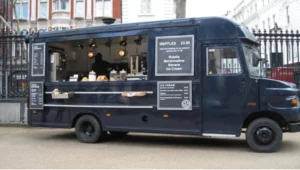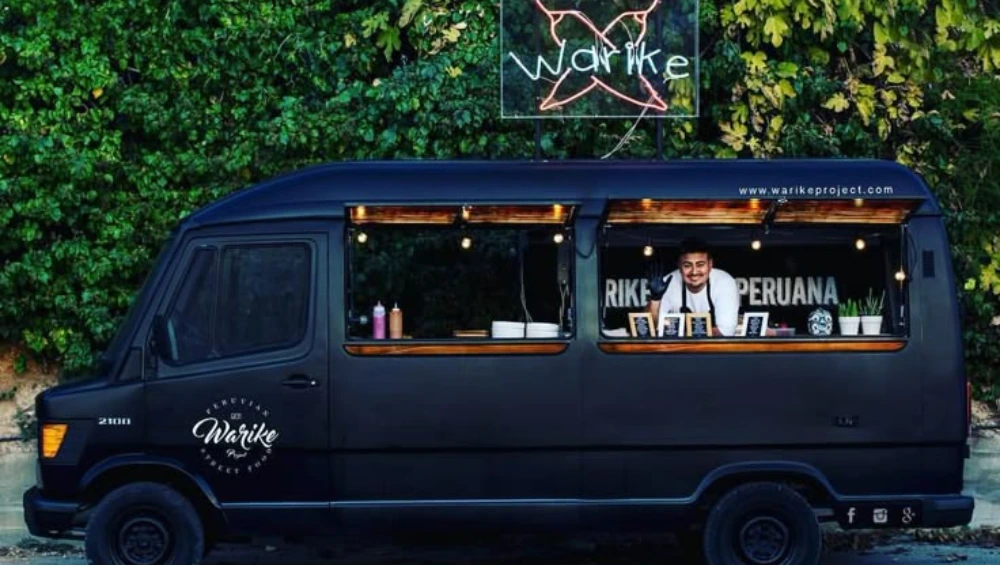The food truck business has emerged as one of the most exciting and profitable ventures in the culinary world. With low startup costs compared to traditional restaurants and the ability to move where customers are, it’s no wonder that aspiring entrepreneurs are drawn to this business model. However, like any business, success in the food truck industry requires careful planning, creativity, and dedication.
This comprehensive step-by-step guide will walk you through everything you need to know to start a thriving food truck business, from idea to launch.
Step 1: Understand the Food Truck Business Landscape
Before diving in, it’s essential to understand how the food truck business operates. Unlike traditional restaurants, food trucks offer flexibility and mobility but also come with unique challenges like limited space, local regulations, and unpredictable weather.
Trends show that the food truck business is booming in urban areas, at events, and in college towns. Knowing your market and what works in your area is the foundation for building a successful venture.
Step 2: Choose a Niche and Unique Concept
Every great food truck business starts with a standout idea. Ask yourself:
- What type of cuisine are you passionate about?
- Is there a food gap in your local market?
- Can you offer a creative twist that sets you apart?
Whether it’s gourmet burgers, Korean tacos, vegan bowls, or fusion dishes, having a niche helps your food truck business stand out and attract loyal customers.
Tip: Keep your menu focused and streamlined. Limited space means you can’t offer a full restaurant-style menu.
Step 3: Create a Business Plan
Like any startup, your food truck business needs a solid business plan. This document will help guide your strategy and is often required if you’re seeking funding.
Your plan should include:
- Executive Summary
- Market Analysis
- Menu and Concept
- Marketing Strategy
- Operating Plan
- Financial Projections
Taking the time to plan thoroughly increases your chances of long-term success in the food truck business.
Step 4: Research and Obtain Licenses & Permits
Running a food truck business legally involves obtaining the right permits, which vary by city and state. Common requirements include:
- Business License
- Health Department Permit
- Food Handler Certification
- Mobile Vendor Permit
- Fire Department Inspection
Failure to comply can result in fines or shutdowns, so it’s crucial to understand the specific rules in your area. Contact your local health department and city office for guidance tailored to your food truck location.
Step 5: Secure Funding
Starting a food truck business typically costs between $40,000 to $150,000, depending on whether you’re buying new, used, or leasing a truck.
Potential funding sources include:
- Personal savings
- Small business loans
- Investors or partners
- Crowdfunding platforms
Remember to include costs for the truck, equipment, branding, permits, inventory, and an initial marketing push when calculating the funding needs for your food truck.
Step 6: Buy or Lease a Food Truck
Your truck is the heart of your food truck business. You can choose to:
- Buy new: Custom-built but more expensive
- Buy used: More affordable, but may need modifications
- Lease: Lower upfront cost, but you don’t own it
Make sure the truck meets all health and safety codes in your region. Layout and equipment should suit your menu and allow for efficient cooking and service.
Pro tip: Work with a food truck manufacturer who understands the unique needs of a food truck.
Step 7: Design Your Truck and Branding
Your truck’s design is your moving billboard. An eye-catching, professional look attracts attention and builds credibility for your food truck business.
Key branding elements to consider:
- Logo
- Truck wrap or paint design
- Color scheme
- Uniforms or branded merchandise
- Social media visuals
Investing in strong branding can differentiate your food truck in a crowded marketplace.
Step 8: Create Your Menu
A successful food truck business menu is focused, efficient, and profitable. Keep it small to ensure consistency, speed, and cost control.
Tips for building your menu:
- Feature 3–5 core items
- Use overlapping ingredients
- Cater to dietary preferences (vegan, gluten-free, etc.)
- Offer seasonal or local specials
Make sure all dishes can be prepared and served quickly in your limited kitchen space. This operational efficiency is key in the food truck business.
Step 9: Find Strategic Parking Spots
Where you park has a huge impact on your sales. The food truck business thrives on foot traffic, events, and high-visibility locations.
Best spots include:
- Office parks
- Festivals and events
- Breweries and bars
- College campuses
- Downtown lunch hotspots
Scout your city for legal spots and schedule your locations ahead of time. Many cities require permits for vending in public areas—always check the rules.

Step 10: Launch a Marketing Plan
Marketing plays a critical role in your food truck business’s success. Since your truck moves, customers need to know where to find you.
Top marketing channels include:
- Social media (Instagram, Facebook, TikTok)
- Google Business Profile
- Local food blogs and directories
- Loyalty programs
Share daily locations, menu photos, and behind-the-scenes content to engage your audience. Consistent marketing builds a strong following for your food truck business.
Step 11: Hire the Right Team
Even in a small space, the right team is vital. Your food truck business staff should be efficient, friendly, and adaptable.
Depending on your operation, you may need:
- Cooks
- Cashiers or servers
- Prep assistants
- Drivers
Training staff on safety, cleanliness, and speed ensures smooth operations and a great customer experience.
Step 12: Use Technology to Streamline Operations
Modern tools can help your food truck business run efficiently and grow faster.
Useful tech includes:
- POS systems (Square, Toast, Clover)
- Mobile ordering apps
- GPS tracking for customer location updates
- Inventory management tools
- Online catering requests
Embracing technology improves accuracy, customer satisfaction, and profitability in the food truck business.
Step 13: Start Small, Then Expand
Begin with a soft launch at a local event or brewery. Gather feedback and fine-tune your operation before scaling up. Many successful entrepreneurs in the food truck business started with one truck and grew into multiple units, or even opened brick-and-mortar locations.
Once you’ve mastered operations, consider:
- Expanding to more locations
- Catering events and private parties
- Selling branded merchandise
- Partnering with delivery platforms
The growth potential in the food truck business is real if you build a strong foundation first.
Common Challenges in the Food Truck Business
Every business faces roadblocks. Common ones in the food truck business include:
- Bad weather is affecting sales
- Mechanical truck issues
- Permit complications
- Low profit margins
- Competition
Being flexible, having contingency plans, and maintaining quality help you survive and thrive in the competitive food truck business.
Success Stories That Inspire
Many well-known brands began as food trucks:
- Kogi BBQ in Los Angeles revolutionized Korean-Mexican fusion.
- Cousins Maine Lobster gained national fame through Shark Tank.
- The Halal Guys started from a cart and now have locations worldwide.
Their journeys prove that with the right concept and dedication, your food truck business can become a household name.
FAQs
Q: How much does it cost to start a food truck business?
A: It typically costs between $40,000–$150,000, depending on the truck, equipment, permits, and marketing.
Q: Do I need experience to start a food truck business?
A: Experience helps, but with proper research, planning, and training, many newcomers succeed.
Q: Is the food truck business profitable?
A: Yes, when managed efficiently. Profit margins can be 10–20% or more with the right strategy.
Q: Can I run a food truck business part-time?
A: Yes, many start by operating on weekends or at events.
Q: What kind of food sells best?
A: Simple, portable, and flavorful items like tacos, sandwiches, or bowls often perform well.
Conclusion
Starting a food truck business is a rewarding journey for those passionate about food and entrepreneurship. It offers flexibility, creativity, and the chance to connect directly with your customers. However, it also requires discipline, planning, and adaptability.
From selecting the right niche to establishing a strong brand and crafting delicious food, every decision contributes to your success. By following this step-by-step guide, you’ll be well on your way to building a profitable and sustainable food truck business.








